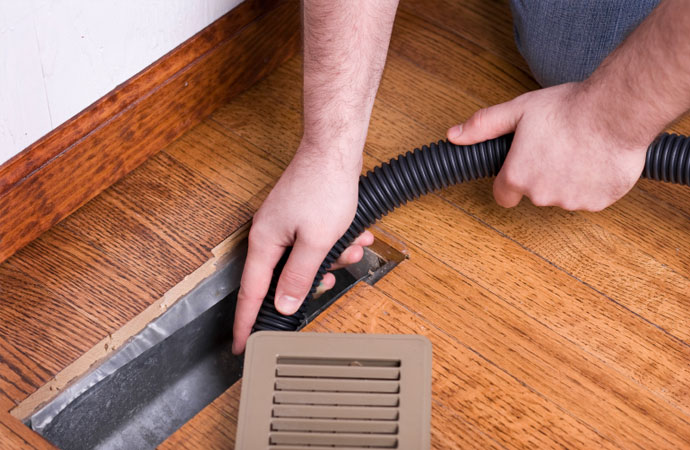
Duct cleaning is a crucial aspect of maintaining a healthy indoor environment and ensuring the efficient operation of your HVAC system. Over time, dust, allergens, mold spores, and other contaminants can accumulate in your ductwork, affecting indoor air quality and potentially causing health issues. To address these concerns, it’s essential to understand the process of duct cleaning and the steps involved in thorough cleaning and sanitization.
Step 1: Inspection and Assessment
The first step in the duct cleaning process is to conduct a thorough inspection of your HVAC system and ductwork. Professional technicians will assess the condition of the ducts, identify any problem areas, and determine the level of contamination. This initial assessment helps create a customized cleaning plan tailored to your specific needs.
Step 2: Preparation and Protection
Before commencing the cleaning process, the technician will take necessary precautions to protect your home. Furniture, carpets, and other belongings will be covered to prevent dust and debris from settling on them during the cleaning process. The technician may also wear shoe covers to avoid tracking dirt into your living spaces.
Step 3: Access and Ventilation
To access the ducts, the technician will open or remove vent covers strategically. Special tools and equipment will be used to create a secure entry point into the duct system. Proper ventilation is crucial during cleaning to ensure that dislodged contaminants are safely carried out of your home.
Step 4: Loosening Contaminants
To dislodge dirt and debris adhered to the duct walls, the technician will use various cleaning tools. These tools may include brushes, air whips, and compressed air nozzles, depending on the type and extent of the contamination. This step is critical in preparing the ductwork for thorough cleaning.
Step 5: Powerful Vacuuming
A high-powered vacuum cleaner equipped with HEPA filters is then connected to the duct system. The vacuum will draw out the dislodged contaminants, preventing them from recirculating into your living spaces. HEPA filters are essential as they capture even the tiniest particles, ensuring the air is clean and safe.
Step 6: Cleaning of HVAC Components
Apart from the ducts, the HVAC system’s components, such as the blower motor, evaporator coil, and housing, may also accumulate dirt and debris. Technicians will clean and sanitize these components to optimize the system’s performance and prevent further contamination.
Step 7: Sanitization and Deodorization
After thorough cleaning, the technician may apply a sanitizing solution to eliminate any remaining bacteria, mold, or allergens. This step ensures that the air circulating through the ducts is free from harmful microorganisms. Additionally, deodorizers may be used to leave your home with a fresh and pleasant scent.
Step 8: Inspection and Final Check
Once the cleaning and sanitization process is complete, the technician will conduct a final inspection to ensure all areas are clean and free from debris. They will also verify that the ducts are appropriately sealed and that the HVAC system is functioning correctly.
Step 9: Documentation and Recommendations
Professional duct cleaning services often provide documentation of the cleaning process, including before and after photos. The technician may also offer recommendations for ongoing maintenance and suggest a suitable cleaning schedule based on your home’s needs.
In Conclusion
Understanding the process of duct cleaning and the steps involved in thorough cleaning and sanitization is essential for homeowners. Regular duct cleaning not only improves indoor air quality but also promotes energy efficiency and extends the lifespan of your HVAC system. By entrusting this task to skilled professionals, you can breathe easy knowing that your home’s air is clean, safe, and conducive to a healthier living environment.
Read more articles for viraltechonly






